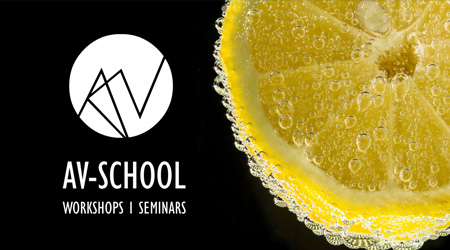Mathematics and Art
Teaching Staff: Panagopoulos Michail
Course Code: THE104
Course Category: General Background
Course Type: Compulsory
Course Level: Undergraduate
Course Language: Greek
Delivery method: Lectures
Semester: 1st
ECTS: 6
Teaching Units: 4
Teaching Hours: 4
Teaching Structure:
| Activity | Semester Workload |
|---|---|
| Lectures | 26 |
| Tutoring Lectures | 26 |
| Literature Study and Analysis | 64 |
| Practice and Preparation | 34 |
| Course Total (ECTS: 6) | 150 |
Prerequisite to / Recommended to: TEC414, (AVA745), (THE806)
This course analyses the relation between mathematics and art through the presentation of specific examples, as well as the basic theory, proving their bonds and interdependence. The course is organised in three basic units (painting, formative arts, and music), in each of which the basic concepts are presented, together with examples of celebrated works, in conjunction with the analysis of the respective mathematical concepts. In the context of the course, special emphasis is placed on the application of the aforementioned concepts through examples and drills. In parallel, special tutorials are provided concerning reviewing basic mathematics that are needed in audiovisual technology.
Scope of the course is to provide to the students an overview of the traditional relation between mathematics and art. To understand the connection between the consistency of science and aesthetics and harmony.
After the attendance of the course the student will be able to:
- spot and identify the golden ratio and symmetries to artefacts and artworks
- understand fractals and their connection to artworks
- understand ratios to music harmony
- to draw functions and curves
- understand basic algebra for computer programming
1st Week
Course introduction. General description of the syllabus, course evaluation and the compulsory project. Introduction to Golden Ratio: definition – properties of the number Φ.
TUTORIAL: Basic mathematics overview (functions, coordinate system). Basic function graphics (strait lines, parabola, exponential etc.).
2nd Week
Doubling the cube – Fibonacci sequence – Pascal triangle and their relation to Golden Ratio. Golden ratio construction on a line segment and construction of a golden rectangle. Golden triangles, Fibonacci spirals, golden ratio examples – “The Vitruvian Man”.
TUTORIAL: Golden ratio calculation, proof of Φ properties, proof of geometric construction of golden ratio.
3rd Week
Symmetry: Definition – reflection symmetry, rotation symmetry, translation symmetry. Team theory (equivalence of symmetries).
TUTORIAL: Triagular functions, triangular cyrcle. Sinus functions, wave function.
4th Week
Symmetry (cont). Shape symmetry (triangle, rectangle). Rosete symmetry.
TUTORIAL: Logarithms, logarithmic function. Cirle equation.
5th Week
Symmetry of solids (tetrahedron, cube). Frieze symmetry (7 types of symmetry). Wallpaper symmetry (17 symmetries).
TUTORIAL: Symmetry exercises
6th Week
Fractals – Chaotic systems – selfsimularity. Golden triangle, Weierstrass function, Durer pentagon, Von Koch snowflake.
TUTORIAL: Conics – ellipse, parabola, hyperbola. Spirals (logarithmic, linear)
7th Week
Fractals (cont). Sierpinski triangle, Sierpinski carpet. Julia sets, Mandelbrot sets. Fractal dimension. Fractal applications
TUTORIAL: Von Koch snowflake perimeter and area calculation
8th Week
Escher: his work. Symmetry in Escher paintings – Escher tilings
TUTORIAL: Fractal dimension calculation of basic shapes
9th Week
Escher (cont): selfsimularity in Escher works – impossible shapes
TUTORIAL: Introduction to matrices. Definitions, properties – operations with matrices, matrix multiplication
10th Week
Introduction to Music and Math: Pythagoras and fractions, monohord, tone, semitone.
TUTORIAL: Transpose matrices, invert matrix, determinants, systems and determinants.
11th Week
Music and Math (cont): Fourier analysis – twelve-tone method (Schoenberg) - Xenakis
TUTORIAL: Examples of application of mathematical curves to art.
12th Week
General overview of the relation between art and mathematics – mathematics as inspiration to art. Examples (origami, mandala, rosetes, kaleidoscope etc.). Topology and its applications to architechture and scalpture.
TUTORIAL: Analysis Fourier exercises
13th Week
General overview of the course – previous exams demonstration
Paul A. Calter. (2006). Squaring the Circle
Sasho Kalajdzievski (2008). Math and Art – An introduction to Visual Mathematics
Felipe Cucker (2013). Manifold Mirrors – The Crossing Paths of the Arts and Mathematics
Teaching is taking place in the classroom where the basic theory is presentment together with provided examples. The tutorial part of the course includes proofs, drills and analysis of theory details.
Enhanced by multimedia content.
The learning process is supported by the asyncrhonous e-learning platform e-class.
The evaluation is a result of the final written exam and a compulsory project.
Back
| << | < | December 2025 |
> | >> | ||
| Mo | Tu | We | Th | Fr | Sa | Su |
1 |
2 |
3 |
4 |
5 |
6 |
7 |
8 |
9 |
10 |
11 |
12 |
13 |
14 |
15 |
16 |
17 |
18 |
19 |
20 |
21 |
22 |
23 |
24 |
25 |
26 |
27 |
28 |
29 |
30 |
31 |
||||



 Mathematics and Art
Mathematics and Art







